Hollywood Reverse: 10 Interesting Facts About North Korean Cinema
Categories: Asia | Cinema | World
By Pictolic https://pictolic.com/article/hollywood-reverse-10-interesting-facts-about-north-korean-cinema.htmlWe are all used to the fact that in American films the role of the enemy goes to North Korea. But for many, it may seem strange that the country of almost victorious communism also has its own cinema with action films, melodramas and horrors. Of course, in the films of the DPRK, courageous and smart Koreans with party badges defeat stupid and cowardly Americans, practically with their bare hands. What do we know about North Korean cinema, which has become one of the most effective propaganda tools?

Everyone knows that North Korea lives only because the leader takes care of the country and its people day and night. But saying that the DPRK has its own film industry thanks to Kim Jong Il, we are not at all flattering the late leader. Kim Jong-un's father was a big fan of cinema and in the 1970s and 1980s personally gave instructions regarding the development of this branch of art and monitored its financing. It was he who initiated some tricks, of course, for the benefit of art.
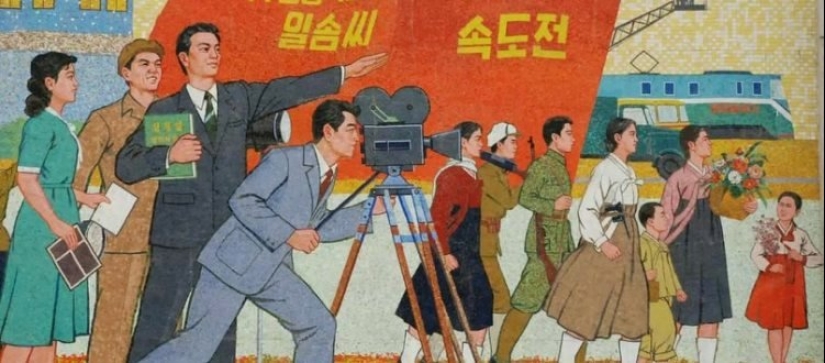
Since the specialists involved in cinema in the DPRK left much to be desired, the government was faced with the issue of attracting good foreign specialists. Can you imagine an eminent director who dreams of dropping everything and going to the lair of the communists, filming heroic epics? Kim Jong Il also had no illusions.
That is why he ordered the kidnapping of the famous film director Shin Sang Ok and his former wife, actress Choi Eun-hee, in South Korea in 1978. Thanks to Sin's forced labor in North Korea, decent films finally began to appear.
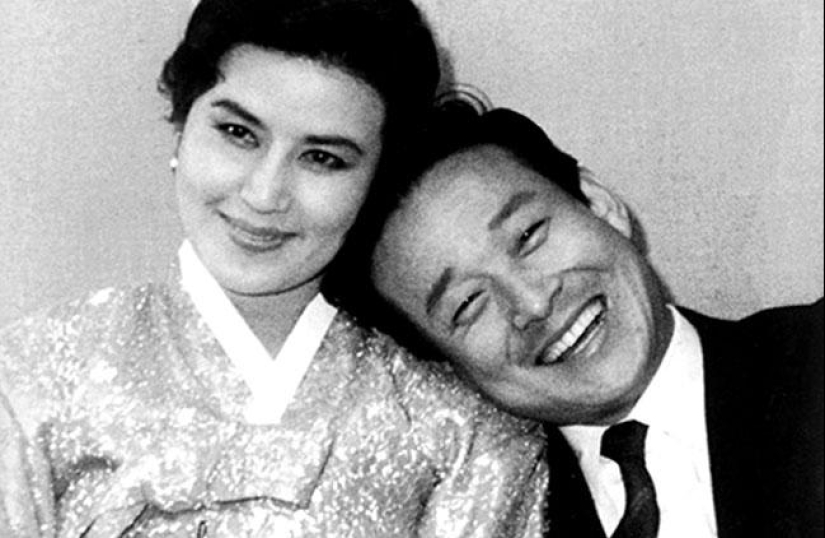
Johannes Schongerr, author of the nonfiction book North Korean Cinema: A History, described the significance of the kidnapped director to the country's cinema this way:
Shin San Ok's most famous works are the action film The Fugitive and the disaster film Pulgasari, similar to the Japanese film Godzilla. In 1986, the North Korean cinema suffered an irreparable loss - during a business trip to Vienna, Sin and his ex-wife managed to escape. This happened almost before the release of "Pulgasari" and Kim Jong Il instructed to remove the name of the fugitive from the credits.
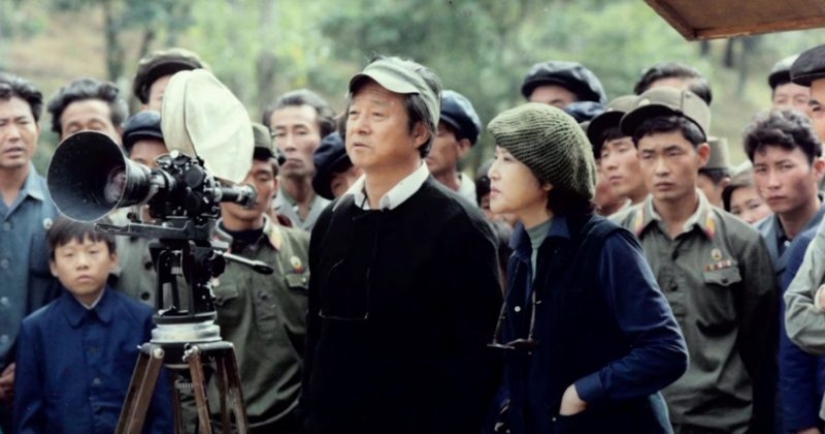
Heroic epics, thoroughly saturated with propaganda, had to have corresponding negative heroes, preferably not of Asian appearance. Local actors for whom the whole Pyongyang University of Cinema and Dramatic Arts were organized were not suitable for these purposes and foreigners were invited to play bad Americans in the cinema.
The same Johannes Schongerr writes about this phenomenon in his book:
Former Americans Charles Jenkins, Larry Abshire, Jerry Parish and James Dresnok, who fled the United States back in the 60s, became the classic cinema villains for the cinema of the DPRK. All of them can be seen in the terribly boring propaganda series Nameless Heroes, which was released in 1978.
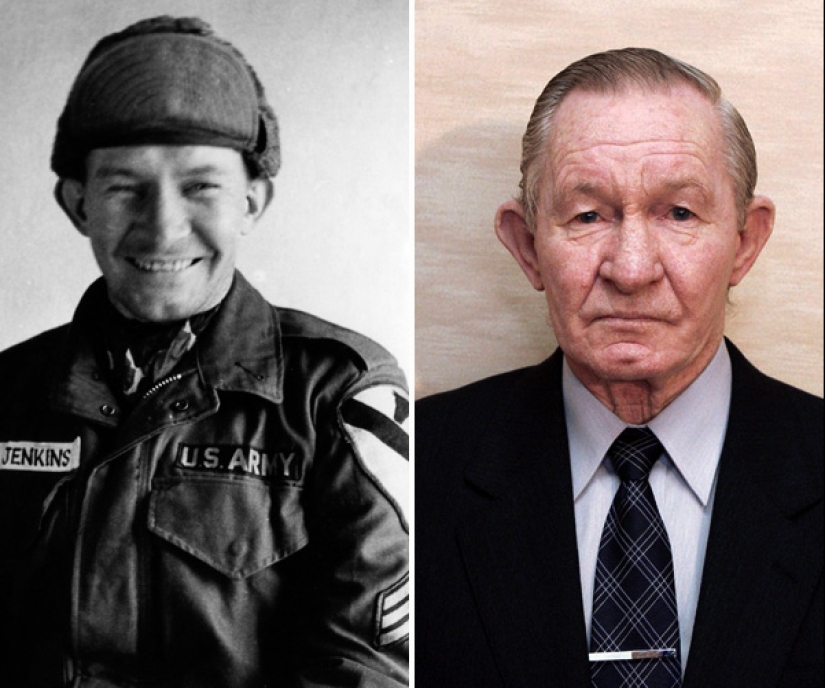
Regarding this filming, one of the actors, Charles Jenkins, said that he was forced to play by force and that moving to North Korea was the biggest mistake of his life. But some Americans still remain in North Korea, such as James Dresnok. The elderly actor is popular among the people of the country, but they call him Arthur, after one of the characters played.
Many attribute North Koreans' love of cinema to a limited choice of cultural activities. Schongerr interviewed many refugees from a communist country and asked everyone the same question - why did they regularly go to movie screenings. Almost all of Johannes' interlocutors said that in the 80s and 90s they attended evening sessions in order to be in the company of their peers.
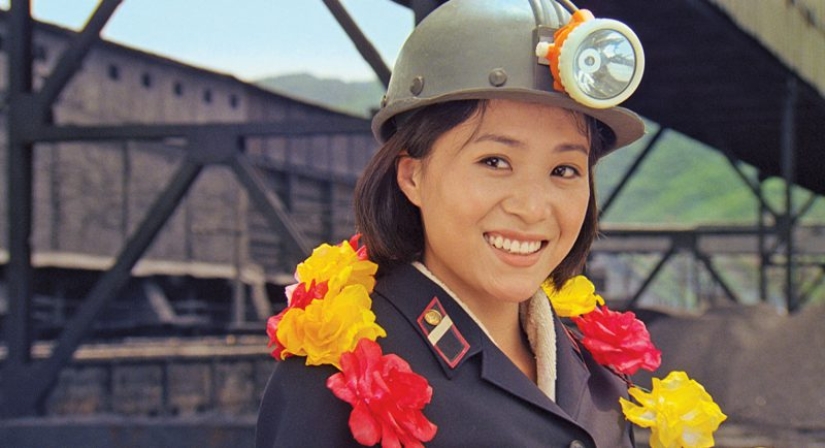
Mark Morris, a lecturer in the Department of Asian and Middle Eastern Studies at the University of Cambridge, argues that screenings take place not only in cinemas, but also in military units, in factories and plants, and even on collective farms:
Sometimes there is a commissioner at the screening, who, after the film, can approach any of the spectators and ask for a short assessment of the film. That is why the ideological content of the film is of more interest to many North Korean "cinephiles" than the subtleties of the plot.
There are many genres in North Korean cinema today, but they all have one important goal - to glorify the party, Kim Il Sung, Kim Jong Il or Kim Jong Un. This line is present even in historical films - in this case, the filmmakers show a contrast in terms of how bad and hopeless it was before and how wonderful people live today.
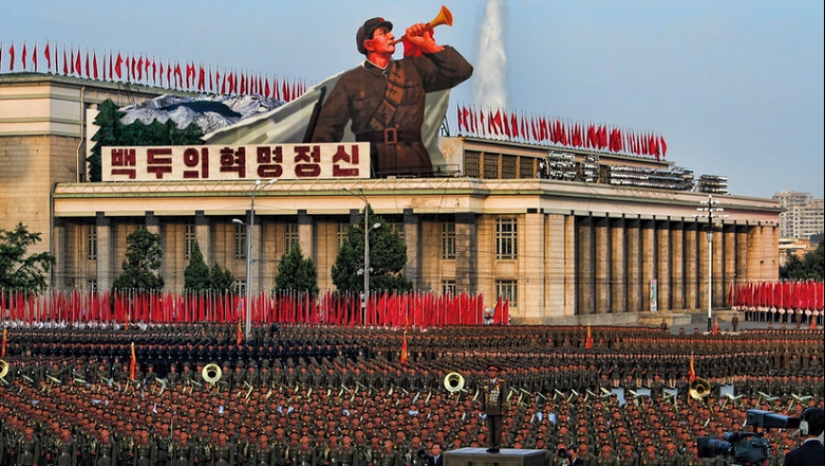
For example, the film "The Flower Girl", in which events take place during the occupation of Korea by the Japanese, shows how the ordinary inhabitants of the country were oppressed by the occupation authorities and their henchmen from the local bourgeoisie. Everything changes for the better only after the revolution and the coming to power of Kim Il Sung.
In martial arts movies, all the bad guys are usually either Japanese or American. Interestingly, although relations with neighboring South Korea are also very tense, they prefer not to make the inhabitants of this country inveterate scoundrels. If there is a bastard from Seoul in the film, then by the end of the film he will definitely take the path of correction and join the party.
Great personalities are present in films only indirectly - they are preferred not to be shown in films. To demonstrate their wisdom and courage, various ingenuous tricks are used. Dr. Morris described these directorial findings as follows:
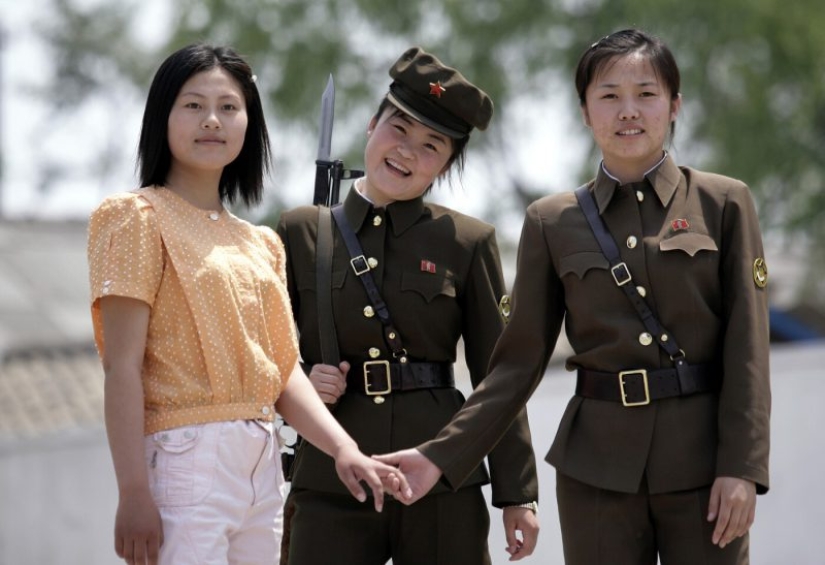
There is a similar scene filled with symbolism in the film Marathon. There, the girl runs with all her might downhill to see a passing motorcade with Kim Jong Il, but does not have time. Then the girl touches the tire print of the leader's car and cries of happiness.
Military patriotic films are an important part of North Korean cinema. And, of course, the lion's share of the paintings is connected with the occupation of the country by Japan, which took place from 1910 to 1945.
A special center has been created for filmmakers, where military films are shot. The army allocates soldiers and any weapons and equipment for participation in extras absolutely free of charge. In the documentary "Big North Korean Cinema", director Lynn Lee showed how war films are filmed in this country.
Despite the fact that Lee was a foreigner, she was allowed to shoot on the set, where director Pio Khan was filming another monumental picture about the war. In the film, Khan is shown sternly chastising the extra soldiers for weakly mourning in the scene where they have to lay down their arms in front of the Japanese. In the end, after several unsuccessful takes, it was decided to use special eye drops that cause tears.
Although there have never been women in the North Korean government, there is a strong tendency in films to depict strong female characters. The set of types is small: athletes, spies, traffic controllers, production leaders and, of course, military women.
Schongerr notes that all women are strong, hardworking, noble and, as a result, often sacrifice themselves for the sake of leaders. Interestingly, if earlier there were more strong men in films, now women are more often made heroes, and the representatives of the stronger sex are shown as ordinary people or even weaklings.
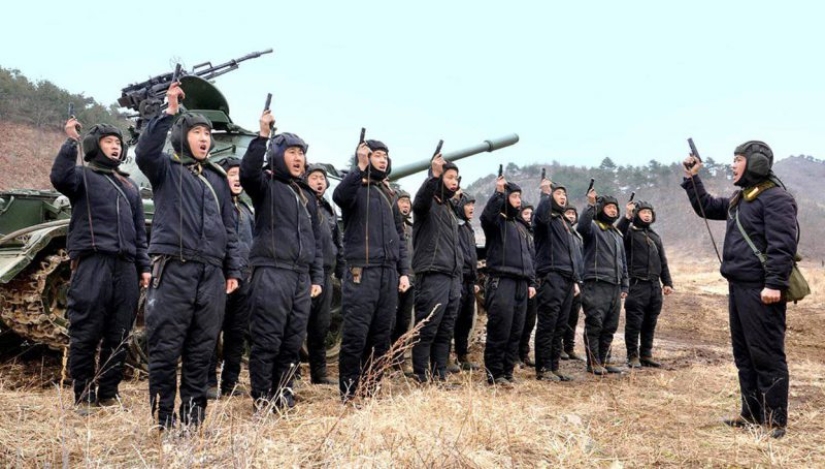
In many films of recent years, it is women who show men how to behave in difficult and dangerous situations and how to sacrifice themselves for the sake of their beloved Leader. Dr. Morris easily explains this unusual predilection for the exaltation of women:
So that, nevertheless, beautiful ladies do not become arrogant, at the end of the film they are traditionally married off, as if saying that a woman, even the most heroic and ideologically savvy, should know her place.
Very rarely there is a holiday on the streets of North Korean fans of world cinema. Despite the most severe censorship, some films manage to seep into the DPRK. The Pyongyang Film Festival takes place every two years, during which the British films "Mr. Bean" and "Elizabeth: The Golden Age" were screened. Once they even showed the American painting "Evita".
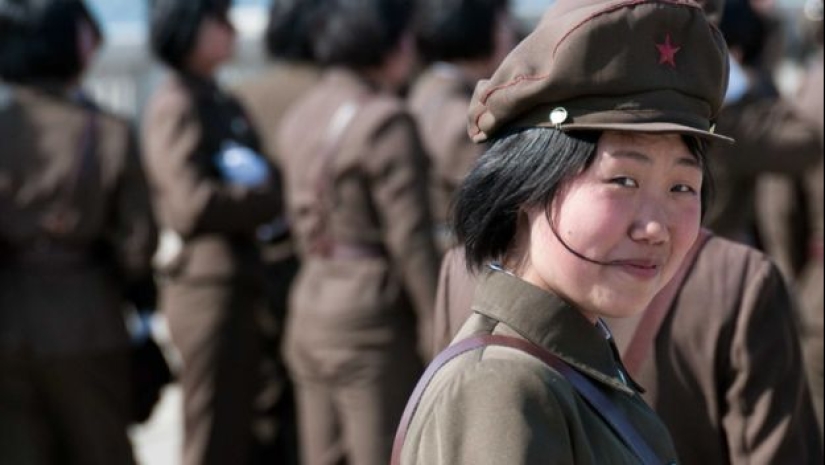
Foreign films are rarely shown in cinemas, and almost never on television. The only exception was the comedy Bend It Like Beckham, shown in 2010 on the central channel. This happened thanks to the initiative of the British Embassy, which thus tried to improve relations with Pyongyang.
Lynn Lee and James Leong, who were filming a documentary on North Korean cinema, were forced into tight boxes and showed the footage to the censors every night. This is despite the fact that the shooting took place under the scrutiny of many eyes and there was not the slightest chance to remove the unwanted.
But the censors did not eat their bread in vain, and even in such a situation they found what could be forbidden. Sometimes these remarks looked more than strange - for example, Lee and Leong were forbidden to film cyclists, people in unbuttoned shirts and power lines with wires and cables.
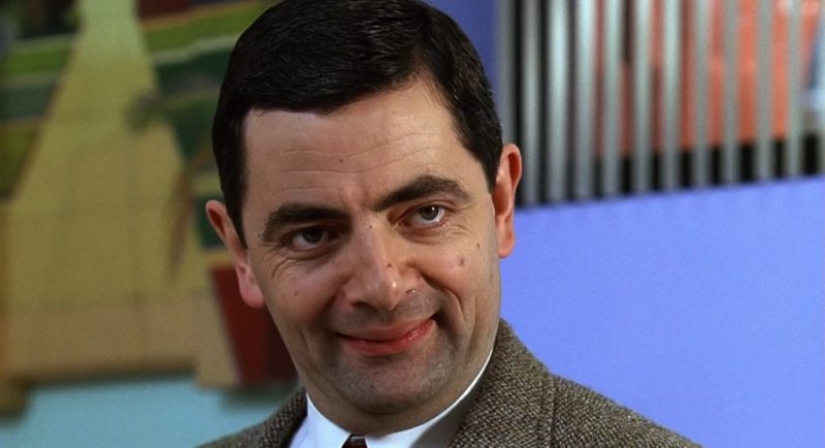
Lee believes that the censors wanted their fellow citizens to look as presentable as possible in the frame. The filmmakers could not ask questions to those who made decisions about what was possible and what was not possible - for several weeks of work, they never met with the censors.
Lynn Lee recalls that very serious attention was paid to how the images of leaders Kim Il Sung and Kim Jong Il were framed in the film.
One of the scenes of the film "Big North Korean Cinema" had to be completely re-shot, as it showed a museum of North Korean cinema. On the walls of the premises there were many portraits of leaders, which during the filming no one paid much attention to and the censors rejected the way they were cropped.
Recent articles

In the fall of 1972, Bill Yates traveled through the countryside in the vicinity of Tampa, Florida. At that time, he was studying ...

Severe cold weather does not give up its positions. We offer you to admire the magical photos of winter Europe, because snow and ...

Vladimir Lyubarov is an artist from the countryside who paints pictures of real life. But he brings amazing characters, birds, and ...